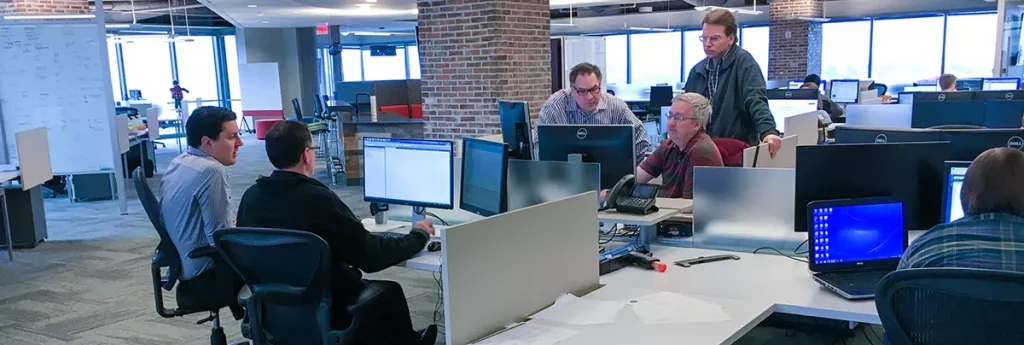
Why Professional Software Design Is Critical
By SOLTECH
When you use software, you get to interact with what is on the outside – the user interface. What happens inside the software, however, is largely invisible to you.
Like a building, an application can be designed and built well, or it can be designed poorly. It can withstand the stress of a heavy load and malicious users, or it can crumble under its own weight. The difference is in how the software was designed and how that design was executed.
Although the analogy between building software and buildings is a great one, where they differ however is that buildings are required to meet certain standards and be inspected by a certified inspector. The same is not true for software.
Unfortunately, there isn’t a set of required inspections for your application, and there aren’t any software “building codes” you need to follow unless you want to be compliant (PCI, SAS70, HIPAA/HITECH, etc.).
Knowing that the inner-workings of an application are largely invisible to you, how can you be sure your software is designed and built well?
The first step is recognizing that there is more to creating reliable and robust software than sketching out the screens and writing some code. The next step is to find a professional software architect who can help you.
A software architect or a solutions architect is someone who can help you capture your ideas and translate them into a software solution that your users will love and that will deliver what your business needs long-term.
The Goals of Solution Architecture
A solution architect and their team are experienced resources who can balance your software ideas, business needs, and budget with technology choices, user experience design, and software architecture.
There are many goals of solution architecture. Here are just a few to help you understand why it is a critical part of any custom business application.
1. The User Experience
Although the user interface is something you can see and judge for yourself, there is an art to creating a great user experience. Most people understand how to break down a workflow into screens, but user experience goes beyond that. It includes making an interface that is intuitive, easy to use, and allows the user to accomplish their tasks in as few steps as possible.
The goal is to reduce “friction” for the user. The user interface should not get in the way of the user doing what they want to do. Instead, it should make it easier than they thought possible.
2. The Technology Selection
There are so many technologies today to create fantastic software. Whether you choose licensed software or open source, you still want to select the technology that best meets your needs.
Both your business and your software have requirements that will impact the technology selection of your app. The job of a solution architecture team is to ask the right questions and make wise technology decisions so that the technology supports your business both now and long into the future.
Applications are also written with many technologies combined together. You may hear the term technology stack used. Not only does an architecture team help you select individual technologies that meet your needs, they also look at how those technologies work together in concert.
3. The Non-Functional Requirements
Functional requirements are a list of what your application does – it’s functionality. An example of a functional requirement is that your application needs to enroll new users by asking them a series of questions and then creating their account. Functional requirements tend to be at the forefront of everyone’s mind.
But there are also non-functional requirements and they are very important and often overlooked.
How many users does your system need to support now and in 1 to 3 years from now? How much data will the system need to process every day or every second? What is the required response time of each page? What integrations does the system need to support? Does the system need to be compliant with regulations? What are the standards for security? How is data archival handled?
Non-functional requirements cover the system as a whole and how to keep the system healthy and performing robustly with very important, but less tangible goals of the company in mind.
4. The System Foundation and Architecture
A solid app needs structure. It needs a methodology and constructs for how it is built. There are several layers to an application. Layers may include the data storage, the data access, business logic, web services, batch processes, and the user interface.
How those layers interface with each other while being autonomous is a large part of software design. And best practices are constantly changing.
How software was architected 5 years ago is not how software is architected today. As an industry, we are constantly growing and learning how to build the most robust and reliable systems, while still being quick to market.
A solution architecture team will help you construct your application using the latest proven methods of software design.
Summary
Software is more than the screens you see. There is a lot that goes on behind the scenes that determine if the software will meet the demands placed on it and if it will last. The first step in creating a robust and scalable system is to get a professional to help you design what you need.
6 Items That Are Non-Negotiable When Building Software
Before you get started in developing your software app, discover what is non-negotiable in building a successful software application. In this guide, we share how to build your application on a solid foundation from nearly twenty years of our own personal experience.
You can grab a copy of the guide below and share it with your team!



